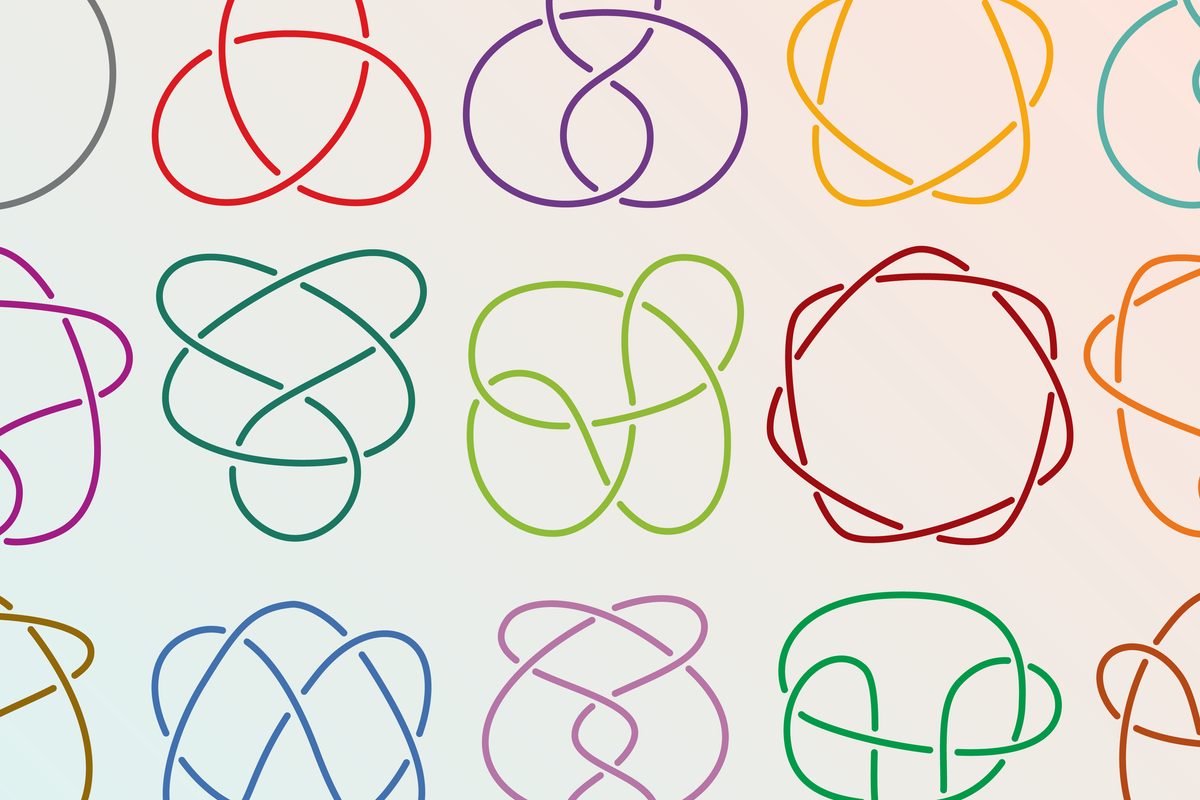
"Find a string. Really. Do it. Now twist, tie and tangle it as much as you like. Finally, attach the two loose ends of your string together to make a closed loop. (This is a crucial step.) What you hold in your hands is one of the most exciting mathematical objects of the 20th century: a knot. (Hopefully you didn't use your headphone wire.)"
"Any knot that can be unraveled into a circle, as two of the above can, is equivalent to the delightfully named unknot. But what about the other two knots? How could we possibly be sure that no amount of pulling, twisting and tying could turn them into circles without wearing out our headphone wires? Is there a way to know that they're really two different knotsthat they can't be arranged to look identical to each other?"
A closed loop of string with its ends joined defines a mathematical knot. Some knots can be deformed into a simple circle; those are called unknots. Other loops cannot be transformed into a circle without cutting, so they are nontrivial knots. Determining whether two knots are the same or different requires invariants and classification techniques. Knots have practical and decorative history across cultures and appear in ancient Chinese and Celtic art. Systematic mathematical classification of knots began in the 1870s, leading researchers to create early tables cataloguing distinct knot types.
Read at www.scientificamerican.com
Unable to calculate read time
Collection
[
|
...
]